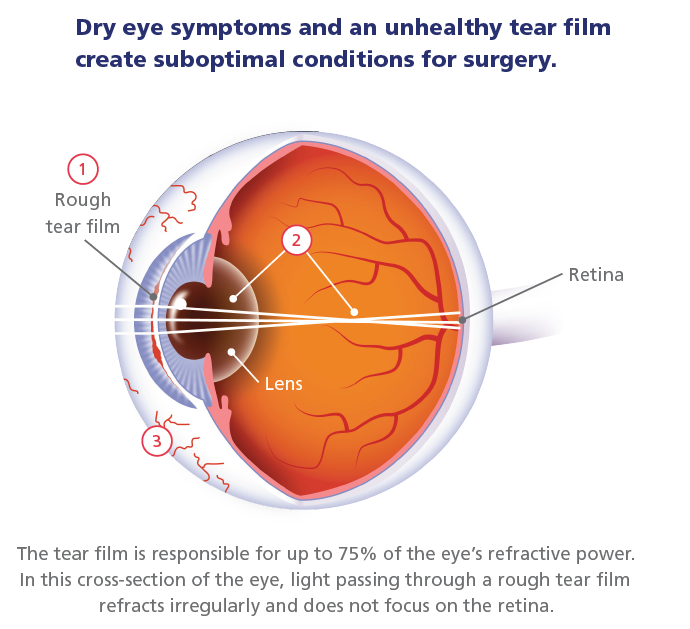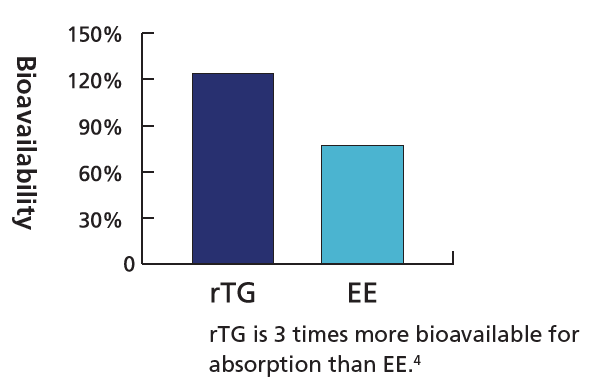Published on April 7, 2018
(Source: PRN)

WITH OMEGA-3 NUTRICEUTICALS
- A bumpy, rough tear film distorts vision and creates an unpredictable surface for surgery
- An unhealthy tear film causes less accurate pre-surgical measurements
- Dry Eye symptoms delay healing and cause discomfort
- A smooth tear film creates precision and accuracy during surgery
- Healthy tear film allows for accurate presurgical measurements
- Reduced dry eye symptoms promote faster healing, clearer vision, and long-term eye comfort
What type of omega-3 is right for me?
Choosing a high quality omega-3 is recommended. Many over-the-counter omega-3s are in a synthetic, ethyl-ester form, which can be difficult for the body to absorb. While this ethyl-ester form is widely available due to the low cost of production, it also results in a lower nutritional value per serving. Omega-3s in the re-esterified triglyceride (rTG) form are the recommended form prior to your surgery. This form provides up to three times better absorption into your body than the other fish oil forms found at the store.1 Re-esterified means the alcohol has been removed and the oil has been converted back to nature’s pristine triglyceride form.
Another critical component of a quality omega-3 is its preferred form of EPA and DHA2, which is most often found in fish. Studies have shown the preferred daily serving of omega-3s is over 2000 mg of EPA/DHA fatty acids.3 Many other over-the-counter supplements provide less than this preferred amount.
Ask your doctor
If you suffer from Dry Eye symptoms, caring for your eyes with omega-3s before and after surgery is an important step in your refractive surgery process. Take time to talk with your doctor about which omega-3 nutriceuticals are right for you.
References:
- J. Dyerberg, et al., Bioavailability of marine n-3 fatty acid formulations, Prostaglandins Leukotrienes Essent. Fatty Acids (2010), doi:10.1016/j.plefa.2010.06.007
- Fish oil: What the prescriber needs to know. Arthritis Research & Therapy 2006, 8:202, Vol.8, No.1 p.2.
- Calder, Philip. Omega-3 polyunsaturated fatty acids and inflammatory processes: nutrition or pharmacology? Br J Clin Pharmacol. 75:3, 645-662, p. 655.
- J. Dyerberg, et al. Bioavailability of marine n-3 acid formulations, Prostaglandins, Leukotrines, Essent. Fatty Acids (2010) doe: 10.1016/j.plefa.2010.06.007
